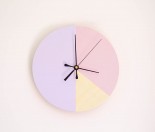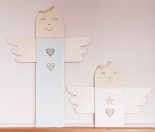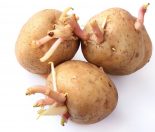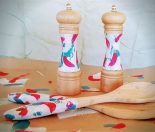We have an old wooden toy chest that we acquired from my Poppy some time ago now. It’s been one of those must-get-around-to-doing projects for a long time. As I’ve been playing around with the acrylic pour technique, I thought ‘why not an acrylic pour onto an upcycled toy chest?’
So finally I took the plunge and got my pour on! This has been such a fun, and slightly addictive process. My husband is a little worried that I’m going to start doing acrylic pours all over our wooden furniture!
Warning this is a VERY messy, but also highly satisfying way to paint. So before you start this project it pays to be well organised. These are the things you are going to need to consider before starting a project like this.
1. Where will you do the pour? The space will mostly be determined by the size of the object you are pouring onto.
2. Do your have enough drop sheets? Two plastic lined drop sheets will stop the spillage of paint going on the floor. And, depending on the shape and size of your object being poured onto, you can stand it in a large cardboard box. Simply line this with a drop sheet and this will stop the paint from going everywhere.
3. Make sure you have something to prop your object up on. This prevents it from sticking to the paint that drips off. We used four lids from a 2L milk bottle. They need to be all the same size so your object stays level. We simply taped them to the bottom of the toy chest lid.
4. Decide on a good drying place where children and animals will not touch it. It is going to take at least a a couple of days to dry. And we learnt this the hard way!
Right with those little prep tips out of the way let’s get started.
Acrylic Pour onto Upcycled Toy Chest
You will need
8 Plastic drink cups
1.5L of Resene Hot Weather Additive
Resene acrylic paints
2 Drop sheets
4 milk bottle tops
A sharpie
1/4 cup measuring cup
Ice block sticks – one for each paint colour.
What to do
Prep
Fist of all prep your area. That means lay down any drop sheets or boxes and tape some footings like milk bottle lids to the bottom of your object. You do this so that you project is not sitting in the paint when it’s being poured around.
Then prep your object. For our toy chest we removed the lid completely for the pour. Then we gave it a good sand back with a power hand sander. I then painted one coat of Resene Quick Dry Primer and let it dry. If your object is wood furniture with a stain, or a urethane type finish, you should use Resene Smooth Surface Sealer.
Mixing your paint
1. Use a 1:2 ratio for mixing up your hot weather additive to your paint. I did this by measuring 1/4 of a cup of Resene Hot Weather Additive to 1/2 a cup of Resene acrylics.
An easy want to do this, so you don’t muck up your measuring cups is draw two fill lines on the plastic drinking cups to fill to.
Do this by filling your cup with water to create the marks. First pour in 1/4 cup of water and draw a mark onto the cup with a sharpie, this is your additive fill line. Then add an extra 1/2 of a cup of water to your cup and draw another line, this is your paint fill line. Now just line up all the cups and mark them the same way.
Once you have all your cups marked up (I used 7 in total) start by adding your Resene Hot Weather Additive to all the cups up to the first line, then fill each cup up with a separate paint colour to the second line. Our colour palette was chosen because we are painting our wall in Resene Dust Storm. So the colours we used were Resene Dust Storm, Resene Sakura, Resene Sauvignon, a mix of Resene Sauvignon and Bedazzled to make a slightly brighter metallic pick and White. I mixed up 3 cups of the white to cover the whole surface first.
Make sure you give each one a good mix with the iceblock sticks.
Pouring your paints
There are a number of ways to create a poured paint effect this article gives you a good run down of different effects you can choose to try. For this project I did the Flip-Cup technique. If I was to do it again, I think I would try a different method as I found this technique a little awkward. Looks like I’ll just have to start another project.
Now this is where the magic starts to happen. So get those gloves on and let’s make some paint pours.
1. First, use an empty cup to layer your remaining paint cups (the paint colours) into. Start with the darkest colour on the bottom and move up to the lightest on top.
2. This could be tricky if you have a large object to coat, as you need to flip your cup as fast as you can, spilling as little as you can. Let the cup sit upside down for a minute, as this allows the colours to drip to the bottom of the cup.
3. Now slide the cup around on the surface of your object while slowly lifting the cup. I love this part because I love watching the paint as it moves across the surface.
4. With gloves on, pick up your object and slowly tip it and move it around, so that the paint runs in a direction you’re happy with. Try to make small tipping movements to direct the paint back and forth where you want it to go. The paint will tip over the sides, but that’s all part of the fun (yes, this is the part that gets a little messy!). You can also use a straw to blow out some of the paint in a direction you like, and to break up any hard paint lines. You want the finished pour to look quite organic.
5. Set your object aside for 2 – 3 days at least to dry completely.
6. Finally, seal the paint with two coats of a high-gloss polyurethane clearcoat, something like Resene Aquaclear will work well. You can use a speedbrush for this, so that there are no brushmarks in the finish.
Warning this paint method is completely addictive for both children and adults alike. It’s very likely as soon as you’ve done one, you’ll be looking for the next object to pour onto. Proceed with caution!
Putting it back together
Once everything has dried reassemble your object. We also sanded and painted the whole chest in Resene Dust Storm to match the top, which I quite like.
For hundreds more arts, crafts and DIY ideas, check out our Creative arts and crafts section.









Sorry if this is a silly question but what exactly did you need the treadmill lubricant for?
Oh! The lubricant is great for dropping into the paint and creating ‘cells’ in the pour. It’s not at all a requirement, and I didn’t actually use it for this pour! So thanks, I’ve removed it from the supply list. — Alayna
What’s the treadmill lubricant for?